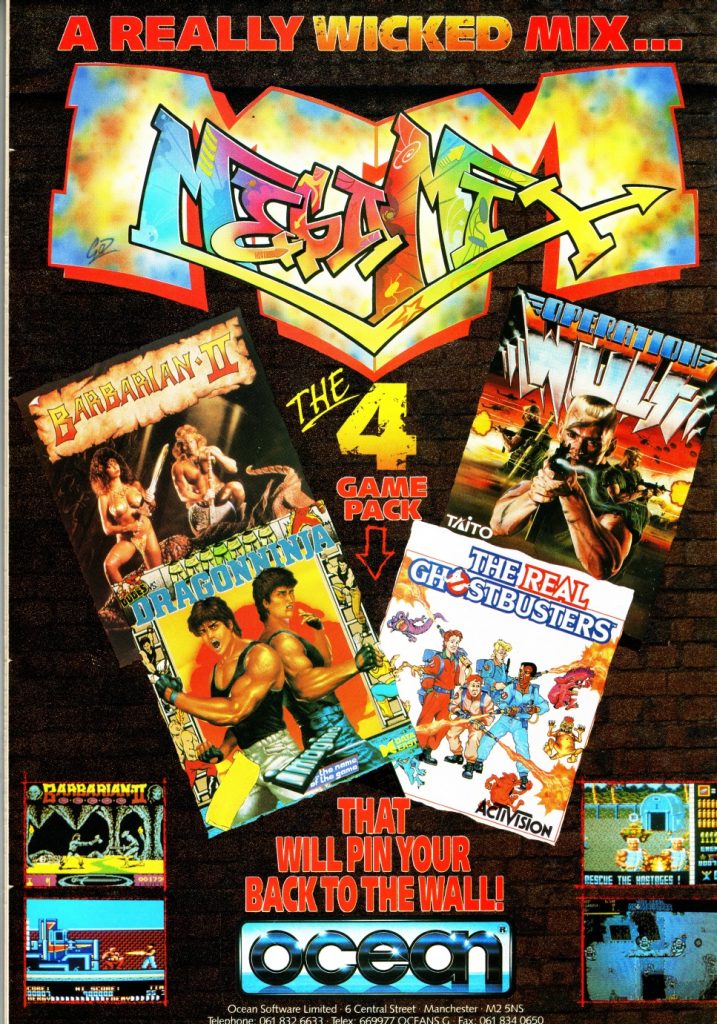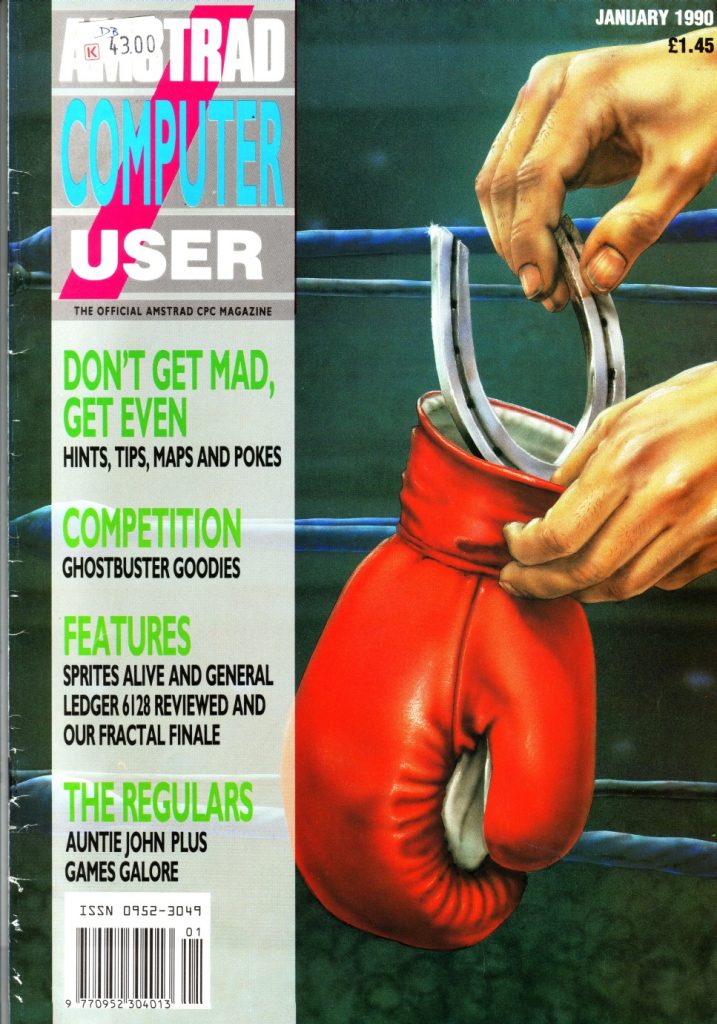While the Amstrad CPC was virtually unheard of in the U.S., it was a popular computer in the U.K. from the mid 1980s into the early 1990s. While there were several variants, they were all based on a 4 MHz Z80 processor and most commonly had 64KB to 12KB of RAM and a built-in cassette or 3-inch disk drive. Amstrad Computer User was one of the magazines dedicated to these machines. The January 1990 issue includes:
Regulars
- Letters – Letters from readers about splitting the screen into two modes, fractal landscapes, typing in programs, building a robot, and more.
- News – Sexism in software; Darius+; the new Delta 2000 joystick; Page Publisher, a new desktop publishing package released; Verran AC Datalink; and more.
- Competition – Win several Ghostbusters themed items by answering a few simple questions about the movies.
- Combat Zone – A look at upcoming arcade games including Exterminator (Gotlieb), Teenage Mutant Ninja Turtles (Konami), Special Criminal Investigations (Taito), Mechanized Attack (SNK), and Line of Fire (Sega).
- 10 Liners – Short type-in programs to create a TV static effect, a robot race, a disk management program, and a morse code converter.
- Microscope – Capturing and printing out images with the CPC.
- Gameplan – Reviews of games including Ghouls ‘N’ Ghosts, Dynamite Dux, After the War, Sporting Triangles, Star Wars Trilogy, Mutant Fortress, and Spaceghost.
- Hints and Tips – Tips, tricks, and cheats for License to Kill, APB, Shinobi, Bards Tale, Archon, Skate or Die, Arctic Fox, Total Eclipse, Dizzy II, and much more.
- Auntie John – A technique for reducing a 16K image to only 8K.
- Comms – An introduction to the world of the BBS.
Features
- Sprites Alive – A review of a software package that allows you to generate your own sprites.
- Ledger – A review to an update of General Ledger 6128, a computerized book-keeping program for the Amstrad CPC from SD Microsystems.
- Fractals – The final part of a three part series on fractals. This part relates to generating landscapes.

…and more!







